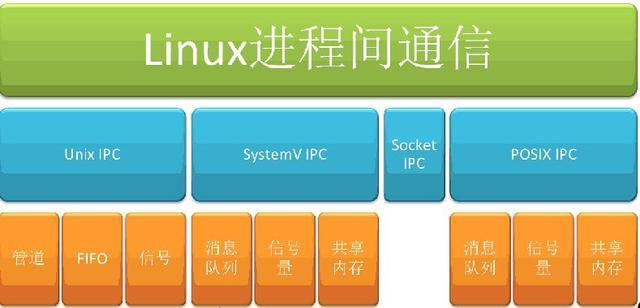The volatile keyword in Java is used to modify shared variables to ensure that their modifications are visible between different threads: Guaranteed visibility: All threads can immediately see modifications to volatile variables. Disable instruction reordering: This can prevent access to volatile variables from being reordered, ensuring a clear read and write order. Use in multi-threaded environments: The volatile keyword is mainly used in multi-threaded environments to ensure the visibility of shared variables and prevent threads from operating different copies. Usage scenarios: Usually used for shared variables that require synchronous access, such as counters and status flags. Note: volatile does not enforce atomicity, does not apply to long and double types, and may

volatile usage in Java
The volatile keyword is used in Java to modify a shared variable to ensure that operations on the variable are visible between different threads. The specific usage is as follows:
1. Ensure visibility
A variable declared as volatile can immediately see modifications to it in all threads. Without volatile, one thread might see the old value of the variable, even if another thread has modified it.
volatile int counter = 0;
2. Disable instruction reordering
The volatile keyword prevents the compiler and processor from reordering access to volatile variables. This ensures that reads and writes to volatile variables occur in a well-defined order.
volatile int flag = false;
// 确保 flag 更改之前,所有线程都可见
if (flag) {
// 执行某些操作
}3. Use in a multi-threaded environment
The volatile keyword is mainly used in a multi-threaded environment because it can ensure that shared variables are shared between different threads. Visibility. If volatile is not used, threads may operate on different copies of the shared variable, causing inconsistent program behavior.
4. Usage scenarios
volatile is usually used for shared variables that require synchronous access, such as counters, status flags, and configuration options.
5. Notes
- volatile does not enforce atomicity, so if multiple threads modify volatile variables at the same time, data races may still result.
- Volatile also does not work with long and double types because they require special synchronization mechanisms in multi-threaded environments.
- Using volatile may impact performance because it prevents instruction reordering, causing pipeline interruptions.
The above is the detailed content of How to use volatile in java. For more information, please follow other related articles on the PHP Chinese website!
 Linux环境编程必须搞懂的几个概念Feb 15, 2024 am 08:03 AM
Linux环境编程必须搞懂的几个概念Feb 15, 2024 am 08:03 AM对于初学者来说,要想在Linux环境下编程,必须深入理解一些重要概念才能更好地编写代码,实现业务功能。下面我们将介绍几个重要且常用的知识点。掌握这些概念可以避免在将来的编码中出现混淆。系统调用“❝所有操作系统的内核中都有一些内置函数,这些函数可以用来完成一些系统级别的功能。在Linux系统中,这些函数被称为“系统调用”(systemcall)。它们代表了从用户空间到内核空间的一种转换。❞”已收到消息.对于初学者来说,要想在Linux环境下编程,必须深入理解一些重要概念才能更好地编写代码,实现业务
 Linux 进程间通信的方法和技巧:如何让进程之间互相交流和协作Feb 11, 2024 pm 02:09 PM
Linux 进程间通信的方法和技巧:如何让进程之间互相交流和协作Feb 11, 2024 pm 02:09 PM进程间通信是指在Linux系统中,不同的进程之间进行数据的传递和共享,以实现进程之间的交流和协作。进程间通信的目的是提高系统的并发性和效率,以完成一些复杂的任务和功能。进程间通信的方法有很多种,如管道、消息队列、信号、共享内存、信号量、套接字等,它们各有各的特点和优缺点,适用于不同的场景和需求。但是,你真的了解Linux进程间通信的方法吗?你知道如何在Linux下使用和选择合适的进程间通信方法吗?你知道如何在Linux下优化和提高进程间通信的效果吗?本文将为你详细介绍Linux进程间通信的相关知
 作为嵌入式开发工程师,关于Linux kernel同步机制你不得不知道Feb 12, 2024 pm 02:50 PM
作为嵌入式开发工程师,关于Linux kernel同步机制你不得不知道Feb 12, 2024 pm 02:50 PM前言同步是进程之间,以及进程与系统资源之间的交互。由于Linux内核采用多任务,因此在多个进程之间必须有同步机制来保证协调。Linux内核中有许多种同步机制。今天我们将重点介绍kernel中的异步和同步机制,其中着重介绍kernel中的异步机制。kernel中的异步机制分为两种:一种是应用层的同步机制,即应用层线程之间的通信;另一种是内核的同步机制。当一个线程进入内核态后,它可以直接与内核沟通。kernel中有两个线程是这样的:一个是线程A,它进入内核态后会直接与内核沟通,告诉它要做什么,完成后
 Golang中同步机制对于游戏开发性能的提升Sep 27, 2023 am 09:25 AM
Golang中同步机制对于游戏开发性能的提升Sep 27, 2023 am 09:25 AMGolang中同步机制对于游戏开发性能的提升,需要具体代码示例引言:游戏开发是一个对性能高要求的领域,在处理实时交互的同时,还要保持游戏的流畅性和稳定性。而Go语言(Golang)则提供了一种高效的编程语言和并发模型,使得其在游戏开发中有着广泛应用的潜力。本文将重点探讨Golang中同步机制对于游戏开发性能的提升,并通过具体代码示例来加深理解。一、Golan
 详解Linux内核中的RCU机制Feb 10, 2024 pm 09:09 PM
详解Linux内核中的RCU机制Feb 10, 2024 pm 09:09 PMLinux内核是一个复杂的系统,它需要处理多种多样的并发问题,如进程调度、内存管理、设备驱动、网络协议等。为了保证数据的一致性和正确性,Linux内核提供了多种同步机制,如自旋锁、信号量、读写锁等。但是,这些同步机制都有一些缺点,比如:自旋锁会导致CPU浪费时间在忙等待上,而且不能在抢占式内核中使用;信号量会导致进程睡眠和唤醒,增加了上下文切换的开销;读写锁会导致写者饥饿或者读者饥饿,而且在读者多写者少的情况下,写者还要获取锁的开销。那么,有没有一种更好的同步机制呢?答案是有的,那就是RCU(R
 Linux多线程互斥量:一种保证线程安全的同步机制Feb 13, 2024 pm 01:40 PM
Linux多线程互斥量:一种保证线程安全的同步机制Feb 13, 2024 pm 01:40 PMLinux系统是一种支持多任务并发执行的操作系统,它可以同时运行多个进程,从而提高系统的利用率和效率。但是,如果一个进程中有多个线程,而这些线程需要共享一些数据或资源,就可能出现数据不一致或资源竞争的问题,导致系统的错误或异常。为了解决这个问题,就需要使用一些同步机制,例如信号量、条件变量、互斥量等。其中,互斥量是一种比较简单而有效的同步机制,它可以让一个线程在访问共享数据或资源时,锁定它们,防止其他线程同时访问,从而保证线程安全。本文将介绍Linux系统中多线程互斥量的互斥的方法,包括互斥量的
 深入探讨Java多线程:同步和死锁的原理解析Feb 18, 2024 pm 08:01 PM
深入探讨Java多线程:同步和死锁的原理解析Feb 18, 2024 pm 08:01 PMJava多线程原理剖析:线程同步与死锁问题分析摘要:本文将深入探讨Java多线程编程中的线程同步和死锁问题。通过详细解释线程的原理和Java提供的同步机制,我们将讨论如何正确地使用同步机制来避免线程冲突和数据不一致的问题。同时,我们还将分析死锁问题以及如何避免和解决这些问题。1.引言随着计算机硬件的发展,多核处理器已经成为现代计算机系统的标配。而多线程编程
 Linux 进程间通信的一种高效方法:使用共享内存Feb 11, 2024 pm 07:00 PM
Linux 进程间通信的一种高效方法:使用共享内存Feb 11, 2024 pm 07:00 PM下面将讲解进程间通信的另一种方式,使用共享内存。一、什么是共享内存顾名思义,共享内存就是允许两个不相关的进程访问同一个逻辑内存。共享内存是在两个正在运行的进程之间共享和传递数据的一种非常有效的方式。不同进程之间共享的内存通常安排为同一段物理内存。进程可以将同一段共享内存连接到它们自己的地址空间中,所有进程都可以访问共享内存中的地址,就好像它们是由用C语言函数malloc分配的内存一样。而如果某个进程向共享内存写入数据,所做的改动将立即影响到可以访问同一段共享内存的任何其他进程。特别提醒:共享内存


Hot AI Tools

Undresser.AI Undress
AI-powered app for creating realistic nude photos

AI Clothes Remover
Online AI tool for removing clothes from photos.

Undress AI Tool
Undress images for free

Clothoff.io
AI clothes remover

AI Hentai Generator
Generate AI Hentai for free.

Hot Article

Hot Tools

MantisBT
Mantis is an easy-to-deploy web-based defect tracking tool designed to aid in product defect tracking. It requires PHP, MySQL and a web server. Check out our demo and hosting services.

Atom editor mac version download
The most popular open source editor

Dreamweaver Mac version
Visual web development tools

Notepad++7.3.1
Easy-to-use and free code editor

SublimeText3 English version
Recommended: Win version, supports code prompts!






